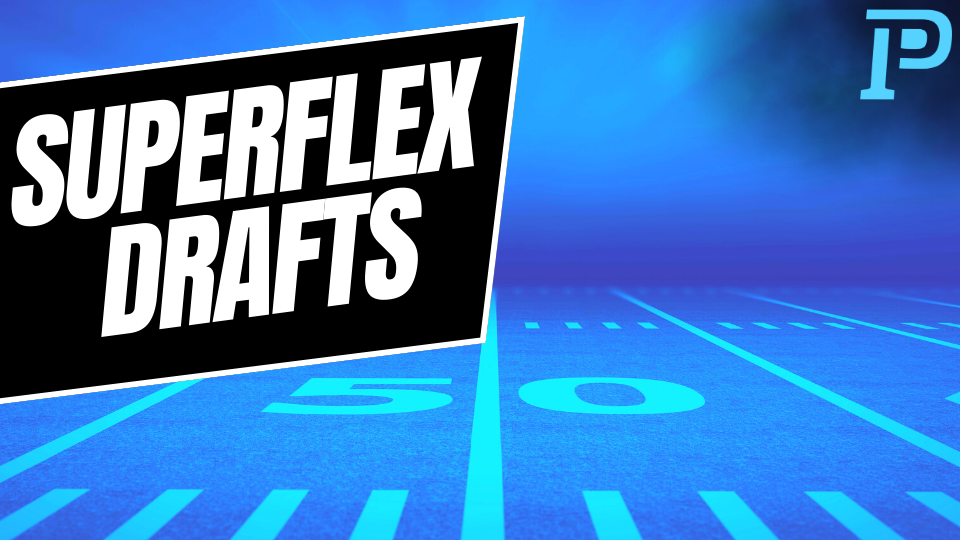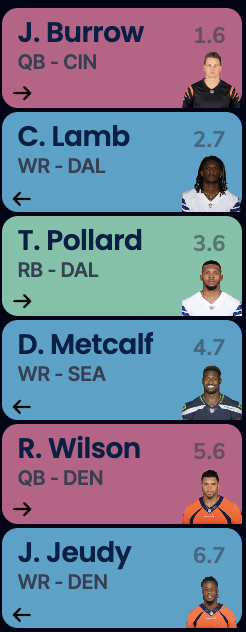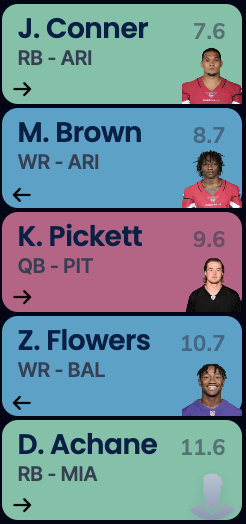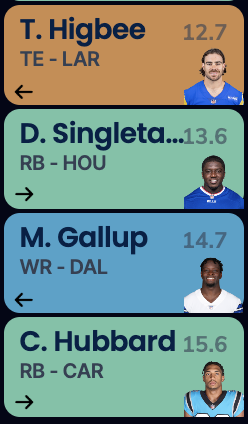Drafting a team in a new fantasy format can be daunting, if you’re not properly prepared. Don’t fret, because PlayerProfiler is here to give you everything you need to know to dominate your Superflex draft. Jonathan Lange already beautifully broke down what a Superflex league is, but let’s briefly refresh before diving into your draft strategy.
The traditional “flex” position, where a player can play a wide receiver, running back, or tight end, is known well in fantasy football and is in nearly every single league. Superflex takes this concept and simply adds the option to play a quarterback. This seemingly simple change completely flips draft strategies on their heads.
There are many paths to take when drafting any fantasy team, especially Superflex, but this is ultimately the safest way to draft a stable lineup with tons of upside. The easiest way to achieve this is by letting the draft flow and following a simple checklist throughout different stages of the draft. Let’s dive in!
The Early Rounds (1-6)
Because the draft order can determine a large portion of the flow, I won’t give you a round-by-round guide to follow. If you’re in the top-half of the draft, you’ll want to spend your first pick on an elite QB. If not, you could shift to taking Justin Jefferson or Ja’Marr Chase with your first pick. That being said, consider the following your “grocery list” for the first 6 rounds:
- A top-15 QB
- A top-15 RB
- 2 WRs
- A top-20 QB
The extra slot is for implementing your ideal strategy. This pick could be used for pairing your quarterback with an elite tight end, loading up your wide receiver core, or whatever your heart desires. Quarterback is simply too important to ignore in these leagues. If you have two quality starters at the position, you’re going to be a tough team to beat. There is a lot of value at the position this season, making it easy to pair a high-end QB with a Geno Smith/Russell Wilson/Jared Goff later on. This strategy allows you to have security at quarterback while still loading up on positional leaders early. It’s important to focus on quarterback. However, remember to not get carried away, you still have an entire lineup to construct.
Example Roster
Using the 6th pick in a 12-team league, here’s an example of executing this strategy.
You may not get Tony Pollard at the 3.6 anywhere outside of a user-less mock draft on Sleeper, but this is what can happen when you follow the checklist while not forcing any picks. You shouldn’t be making significant reaches to secure player-stacks. When you only need to beat your fellow league-mates, correlation isn’t as necessary. This is why, in this build, you should pass on Tee Higgins but can confidently draft Jerry Jeudy.
The Middle Rounds (7-11)
This season, the middle rounds are a great time to put together your positional depth. By the end of this range, your core roster has been completed. The checklist for this range is simple. Just be sure to grab:
- 1 RB
- 1 WR
- Your QB3
How you maneuver beyond this checklist is up to you. There are many high-upside tight ends like Pat Freiermuth and Greg Dulcich going in this range, so this is a good spot to take your tight end if the value if the draft board shakes out the right way.
Example Roster
Let’s look at how our previous example looks from rounds 6-11.
This is a good example on how to build upon our previous start. We’ve surrounded our receiving core with a stable veteran who will dominate his teams targets and a high-upside rookie with 1st round draft capital. Further, we were able to add a veteran running back in a potential bellcow role, solidifying our RB2 spot. We topped it all off with securing our QB depth and a high-upside back who could be a weekly starter for our lineup in the back-half of the season.
The Late Rounds (12-15)
The remaining rounds of your draft are for building up your positional depth with a mix of low-ceiling stability and high-ceiling risk. In league’s of standard depth, you can focus more on the high-ceiling risk as your waiver wire is going to be swimming with low-ceiling assets like Mack Hollins. As other QB-needy teams scramble to piece together their QB room, you’ll be able to pounce on some desirable positionl value.
These final rounds are for balancing out your roster, let’s see how we wrap up our example roster.
Here, we drafted a stable but unexciting tight end in Tyler Higbee. The Rams No. 2 options is a perfect example of the late-round value you can find at tight end. We wrapped up the draft by rounding out our depth at running back and receiver.
Wrap-Up
Don’t over-think it, drafting a Superflex roster dosn’t have to be hard. If you stick to your rankings and follow the checklist, you’ll draft a well-rounded lineup with championship-calibur upside.
Now, what are you waiting for? Go out there and ace your drafts!





